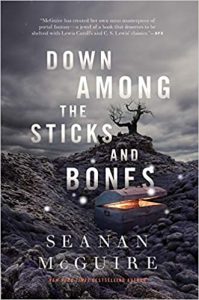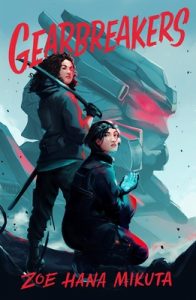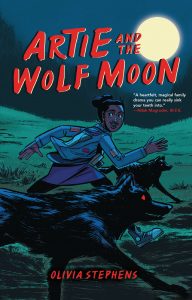Amazon Affiliate Link | Bookshop.org Affiliate Link
Down Among the Sticks and Bones follows twins Jacqueline and Jillian down an impossible staircase they find in a trunk in the attic. The staircase leads them to the Moors, a world of magic and horror, where the girls avoid werewolves and drowned gods. The Moors is a place these two unusual girls can find a home—but it’s a dangerous place, too, and that’s a very dangerous thing to forget.
It’s a quick read with sharp, distinct characters and lyrical prose that uses familiar figures and concepts in unique ways. The world feels very real. Seanan McGuire has a way of outlining just the right details that the imagery feels complete. I don’t know if this world has constellations. Like Jack and Jill, I would be too distracted by the huge, dripping ruby of a moon. The Moors is a world of horrors, werewolves, and vampires, and the humans that make up the bulk of their diet. Meanwhile, the doctor who revives the dead with lightning energy is a hulking figure with a scar around his neck. That made me laugh, a play on the common misconception that Frankenstein is the monster.
It’s also a world made up of people. Characters act in ways real people would. A well-meaning gesture by the protagonist might be harshly denied because a one-scene character has a sharper understanding of the consequences. Main characters can be thoughtless, vain, or impulsive. That level of flaw and nuance keeps the story feeling grounded despite the fantasy setting.
This is an almost incidentally queer book in a very meta way. The underlying concept of the series is that each child’s other world is their home. It isn’t always easy, but they can belong there. A queer girl like Jack wouldn’t feel at home in a world that rejected an essential part of her. I found it refreshing that Jack’s sexuality was a realization for her but never a reveal or a problem. Sometimes it’s nice that a girl can have a girlfriend without fuss being made.
The second book in the Wayward Children series, Down Among the Sticks and Bones can be read before or after Every Heart a Doorway, but I wouldn’t recommend reading only one. The ending will hit you like a sledgehammer.



